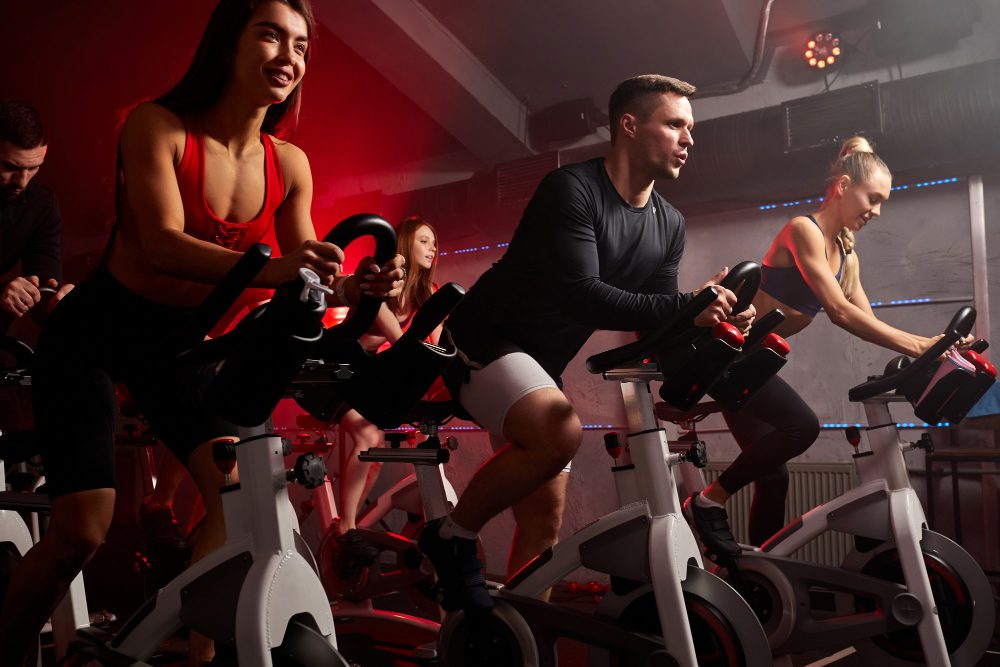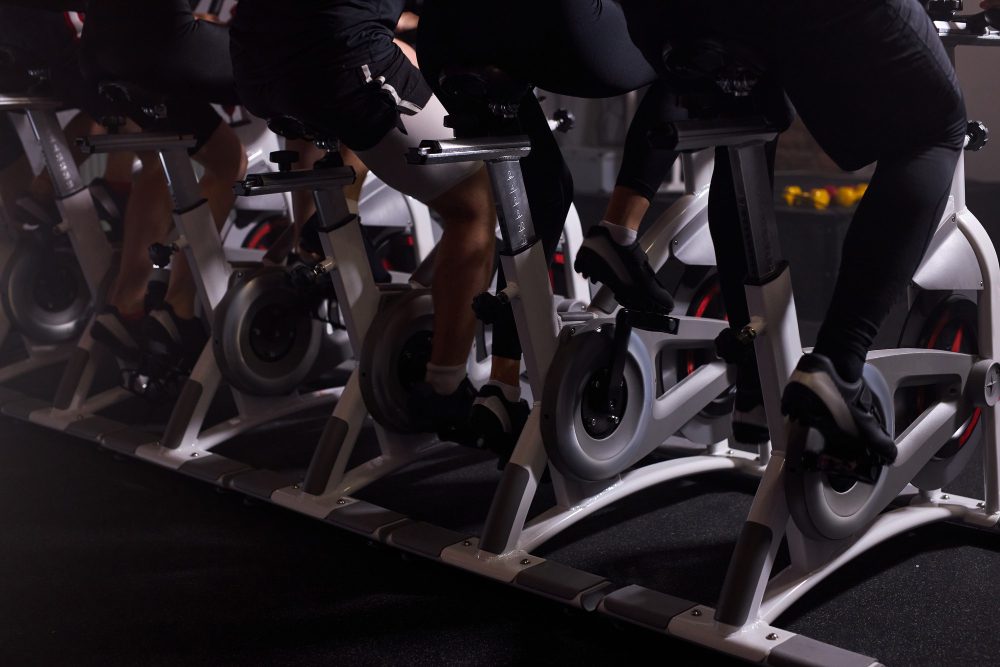What is the difference between an upright bike and a recline bike?
When it comes to choosing a stationary bike for your home workouts, you may come across two popular options: the upright bike and the recumbent (recline) bike. While both types of exercise bikes provide cardiovascular benefits and are suitable for different fitness levels, there are notable differences between the two. In this article, we will explore these differences, helping you make an informed decision based on your preferences and fitness goals.
Upright Bikes: Traditional and Intense
The upright bike resembles a regular bicycle, with the pedals positioned directly beneath the rider’s body. This design allows you to sit in an upright position, engaging your core and back muscles to maintain balance during the workout. Upright bikes provide a more intense cycling experience, simulating outdoor riding conditions.
One of the main advantages of an upright bike is its ability to engage a larger number of muscle groups. When pedaling in an upright position, you activate not only your legs but also your glutes, lower back, and even your arms as they grip the handlebars. This full-body engagement makes the upright bike an excellent choice for individuals looking to burn more calories and strengthen their entire body.
Benefits of Upright Bikes:
- Intense cardiovascular workout
- Engages multiple muscle groups
- Simulates outdoor cycling experience
- Improves core and back strength
“Upright bikes offer a challenging workout that targets various muscle groups while providing an intense cardiovascular exercise.”
Recline Bikes: Comfortable and Low-Impact
In contrast to upright bikes, recumbent or recline bikes feature a laid-back, ergonomic seat with a backrest, allowing you to lean back during your workout. This design provides added support to your back and reduces strain on your joints, making it an ideal choice for individuals with back issues or joint pain. Recumbent bikes offer a more comfortable and low-impact exercise experience while still providing an effective cardiovascular workout.
The seating position of recline bikes also makes them suitable for individuals with limited mobility or those recovering from injuries. The horizontal pedaling motion allows you to keep your legs at a similar height to your hips, minimizing stress on your knees and hips. Additionally, the larger seat and backrest provide extra comfort, reducing discomfort during longer workout sessions.
Benefits of Recline Bikes:
- Comfortable seating position
- Reduced strain on joints and back
- Low-impact exercise
- Suitable for individuals with limited mobility
“Recline bikes provide a comfortable and low-impact workout, making them an excellent choice for individuals with back issues or limited mobility.”
Making the Right Choice for You
The decision between an upright bike and a recline bike ultimately depends on your personal preferences, fitness goals, and any specific physical limitations you may have. Here are a few factors to consider when choosing:
Intensity:
If you prefer a more intense workout that engages multiple muscle groups, an upright bike might be the better option for you.
Comfort and Support:
If you prioritize comfort and require additional support for your back or joints, a recumbent bike is likely the best choice.
Physical Limitations:
Consider any physical limitations or injuries you may have. A recline bike’s lower-impact nature might be more suitable if you have joint pain or mobility issues.
Space and Budget:
Take into account the space available in your home and your budget. Upright bikes tend to take up less space and are often more affordable compared to recline bikes.
Both upright and recline bikes offer an effective cardiovascular workout, so regardless of your choice, integrating either into your exercise routine will allow you to enjoy the benefits of cycling without having to leave your home.
In Summary
In summary, the main difference between an upright bike and a recline bike lies in their design and the muscle groups they engage during workouts. Upright bikes provide a more intense, full-body workout, while recline bikes offer a comfortable and low-impact exercise experience. Consider your fitness goals, comfort preferences, and any physical limitations you may have to make the best choice for your home workouts.
What is the best bike for someone with back problems?
Having back problems shouldn’t prevent you from enjoying the benefits of cycling. However, choosing the right type of bike can make a significant difference in terms of comfort and support for your back. When it comes to selecting the best bike for someone with back problems, there are two main options to consider: an upright bike and a recumbent bike.
Upright Bikes
Upright bikes are the traditional style of bicycles that most people are familiar with. These bikes have a vertical seating position, similar to sitting upright in a chair. While they provide a more traditional cycling experience, they may not be the most suitable choice for individuals with back problems.
One of the main drawbacks of upright bikes for people with back problems is the strain they can put on the lower back. The forward-leaning position can cause discomfort and exacerbate existing back issues. However, there are some adjustments that can be made to improve the comfort, such as raising the handlebars and adjusting the seat height.
Recumbent Bikes
Recumbent bikes, on the other hand, offer a more laid-back and relaxed riding experience. These bikes feature a reclined seating position, with the pedals positioned in front of the rider. This design allows for better weight distribution and support for the back.
Recumbent bikes are often recommended for individuals with back problems due to their ergonomic design. The reclined position helps alleviate pressure on the lower back and provides a more comfortable riding experience overall. It also reduces the strain on the neck and shoulders, making it ideal for people with upper back issues as well.
Choosing the Best Bike for You
When deciding between an upright bike and a recumbent bike for someone with back problems, it ultimately comes down to personal preference and the severity of the back issues. It’s important to consult with a healthcare professional or a qualified bike specialist before making a decision.
Remember, the best bike for someone with back problems is the one that provides the most comfort and support for their specific condition.
Additionally, consider the following factors when choosing a bike:
- Seat comfort: Look for a bike with a well-padded seat and adjustable backrest.
- Handlebar position: Opt for handlebars that allow for an upright or relaxed grip to minimize strain on the back.
- Adjustability: Ensure the bike has adjustable features to customize the fit to your body.
Ultimately, finding the right bike for someone with back problems may require some trial and error. It’s important to take your time, test different options, and prioritize your comfort and pain management needs.
What Kind of Bike for Exercise Older Adults?
1. Introduction
Exercise is an important aspect of maintaining good health, especially as we age. Cycling provides a low-impact cardiovascular workout that is gentle on the joints and can be enjoyed by older adults. When considering the type of bike for exercise, there are two main options to choose from: upright bikes and recumbent bikes.
2. Upright Bikes
Upright bikes are similar in design to traditional bicycles, with the rider sitting in an upright position. These bikes offer a more intense workout as they engage a larger number of muscle groups, including the core, back, and arms. Upright bikes also provide a more realistic outdoor cycling experience, making them a popular choice for those who enjoy both indoor and outdoor riding.
3. Recumbent Bikes
Recumbent bikes, on the other hand, feature a reclined seating position with the pedals positioned in front of the rider. This design offers excellent lumbar support and reduces stress on the joints, making them ideal for older adults with mobility issues or back problems. Recumbent bikes provide a comfortable and ergonomic workout, focusing primarily on the lower body.
4. Which Bike is Suitable?
The choice between an upright bike and a recumbent bike ultimately depends on the individual’s preferences and physical condition. Here are some factors to consider:
- Comfort: If comfort is a top priority, a recumbent bike is recommended due to its supportive seating position.
- Joint Impact: For individuals with joint issues or limited mobility, a recumbent bike’s low-impact nature may be preferable.
- Full-Body Workout: If you’re looking for a more comprehensive workout that engages both upper and lower body muscles, an upright bike is a better choice.
- Goal-Oriented: Consider your fitness goals. Upright bikes are excellent for cardiovascular exercise and calorie burning, while recumbent bikes are great for building lower body strength and endurance.
5. Benefits of Cycling for Older Adults
Cycling offers numerous benefits for older adults, including:
“Regular cycling can improve cardiovascular health, increase muscle tone, enhance joint flexibility, and promote mental well-being.” – British Cycling Association
6. Safety Measures
Regardless of the type of bike chosen, safety should always be a priority. Ensure the following:
- Proper Fit: Adjust the bike seat and handlebars to ensure a comfortable and safe riding position.
- Wear Protective Gear: Always wear a helmet and consider reflective clothing for visibility.
- Start Slowly: Begin with shorter rides and gradually increase duration and intensity to prevent overexertion.
- Stay Hydrated: Drink plenty of water before, during, and after your ride to stay hydrated.
7. Conclusion
Choosing the right kind of bike for exercise as an older adult is essential for enjoying a safe and effective workout. Whether it’s an upright bike for a more intense session or a recumbent bike for added comfort, cycling can help improve overall fitness and well-being for seniors.
By considering personal preferences, physical condition, and fitness goals, older adults can choose the bike that suits them best, allowing them to enjoy the benefits of regular exercise while minimizing the risk of injury or discomfort.
8. Sources:
– British Cycling Association. “Cycling and Aging.” www.britishcycling.org.uk
Are upright bikes more comfortable?
Comfort is subjective
When it comes to choosing between an upright bike and a recumbent bike, the comfort factor plays a significant role. However, comfort is subjective and can vary from person to person. Some individuals find upright bikes more comfortable, while others prefer recumbent bikes.
Upright bike design
Upright bikes have a design that resembles traditional outdoor bicycles. They feature a raised seat and handlebars, which allow you to maintain an upright position while cycling. This design is favored by those who enjoy the feeling of riding a standard bike and prefer an engaging and dynamic workout.
While some people find the upright bike seat comfortable, others may experience discomfort over prolonged periods. The small and often hard seats can lead to saddle soreness or numbness in certain individuals. However, this can be addressed by investing in gel seat covers or padded shorts.
Recumbent bike design
On the other hand, recumbent bikes offer a different design that prioritizes comfort. These bikes feature a reclined seating position with a larger and more supportive seat. The pedals are positioned in front of the rider rather than underneath them.
The reclined position on a recumbent bike reduces strain on the lower back and puts less pressure on the wrists and hands. The seat provides excellent lumbar support, making it ideal for individuals with back issues or those who prefer a more relaxed workout.
Which is more comfortable?
While recumbent bikes are often considered more comfortable due to their ergonomic design, it ultimately depends on personal preference. Some individuals may find the upright position on an upright bike comfortable for their body type and exercise goals.
It is important to try out both types of bikes and assess how your body responds to each before making a decision.
If you are concerned about comfort, it is advisable to test ride both an upright bike and a recumbent bike at a local gym or fitness store. This will allow you to determine which bike provides the most comfort for your specific needs.
Conclusion
Ultimately, the comfort level of an upright bike versus a recumbent bike is subjective and depends on individual preferences. Both bikes have their advantages and disadvantages, so it’s essential to consider your body type, any pre-existing conditions, and the type of workout you desire before making a decision.



